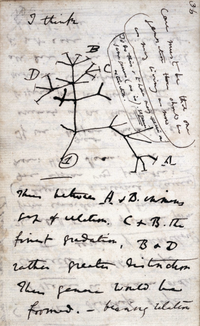
Photo from wikipedia
CASE A58-year-old man called 911 because his 54-year-old brother fell in their apartment. When emergency medical services (EMS) arrived at the apartment, they found it to be infested with insects… Click to show full abstract
CASE A58-year-old man called 911 because his 54-year-old brother fell in their apartment. When emergency medical services (EMS) arrived at the apartment, they found it to be infested with insects and covered with animal feces. The EMS personnel deemed the apartment unfit for human habitation and were worried about either of the brothers remaining in the apartment. They brought both men to the Emergency Department (ED) for evaluation. Upon ED presentation, the 58-year-old man who called to report his brother’s fall also appeared unwell in triage and underwent a full medical evaluation. He was known to have a past medical history of hypertension, bipolar disorder, alcoholism, polysubstance abuse with methadone maintenance, treated hepatitis C infection, and chronic venous stasis with ulceration of the lower extremities. He complained of a left ankle wound associated with increasing pain and drainage for the past 4 days. He denied fevers, chills, cough, nausea, chest pain, and headaches but did note increased diaphoresis, attributed to living in a non-air-conditioned apartment during a concomitant heat wave. On physical exam, he was afebrile and had a stable blood pressure of 150/80mm Hg. His lung fields were clear to auscultation, and there was no evidence of respiratory or gastrointestinal infection. The exam was notable for tremulousness, uneven smile with sluggish left pupillary reflex, poor dentition, distant heart sounds, and an open wound measuring 3 by 5 cm on the medial malleolus of the left lower leg, with evidence of dermatosclerosis and fluctuance but no visibly exposed bone. The lesion was tender, erythematous, and infested with maggots. Laboratory results were notable for hyponatremia, hypoglycemia, leukocytosis, acute kidney injury, and elevated blood lactate. He received 1 liter of normal saline and empirical antimicrobial coverage with piperacillin-tazobactam and vancomycin. Several hours later, his blood pressure dropped to 85/56mm Hg, at which point he was transferred to the intensive care unit (ICU). A wound culture obtained from the ulcer showed pure growth of methicillin-resistant Staphylococcus aureus (MRSA). Admission blood cultures turned positive from the aerobic bottle after approximately 54 h, and the Gram stain was interpreted as positive for Gram-positive rods. After consultation with the Infectious Diseases Department, the differential diagnosis included contamination with nonpathogenic skin flora (e.g., Corynebacterium) versus a mixed aerobic/anaerobic soft-tissue infection, and metronidazole was added to improve anaerobic coverage. After subculture and overnight incubation, abundant growth of small, translucent colonies was observed on Columbia agar with 5% sheep’s blood and chocolate agar (Fig. 1A), with scant growth of non-lactose-fermenting colonies on MacConkey agar. Gram stain from the solid media revealed Gram-negative rods (Fig. 1B), and Citation DiFranza LT, Annavajhala MK, Uhlemann A-C, Green DA. 2021. The Brief Case: A maggot mystery—Ignatzschineria larvae sepsis secondary to an infested wound. J Clin Microbiol 59:e02279-20. https://doi.org/10 .1128/JCM.02279-20. Editor Carey-Ann D. Burnham, Washington University School of Medicine Copyright © 2021 American Society for Microbiology. All Rights Reserved. Address correspondence to Daniel A. Green, [email protected]. For answers to the self-assessment questions and take-home points, see https://doi.org/ 10.1128/JCM.02281-20 in this issue. Published
Journal Title: Journal of Clinical Microbiology
Year Published: 2021
Link to full text (if available)
Share on Social Media: Sign Up to like & get
recommendations!